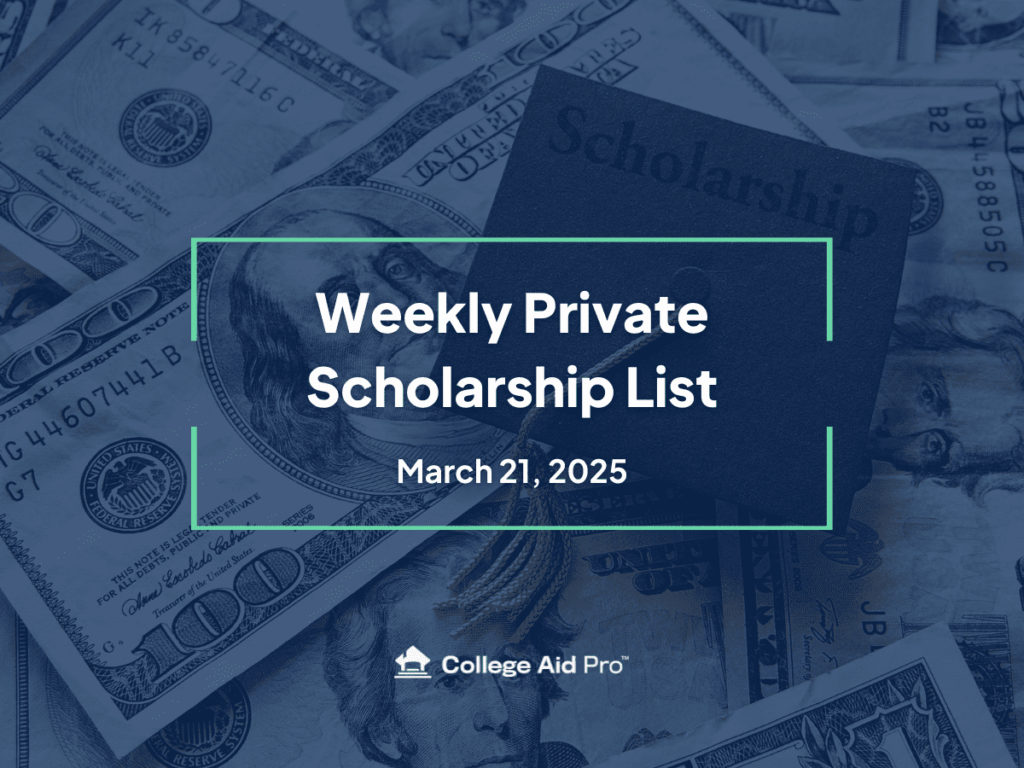I remember standing in my high school guidance counselor’s office, a knot forming in my stomach as we talked about college. All my friends were buzzing about state schools, public universities with their familiar names and, more importantly, their seemingly more approachable price tags. But my heart, it was set on something different. I dreamt of smaller classes, unique programs, and a campus where I felt like more than just a number. My dream schools were private universities, places that, to my young mind, felt like gilded castles reserved only for the extraordinarily wealthy. The sticker shock, when I first saw those tuition figures, was enough to make me want to throw in the towel before I even started.
“Those are wonderful schools,” my counselor said, seeing the look on my face. “But have you thought about scholarships?”
Scholarships. The word sounded like a magic spell, whispered in hushed tones. I knew they existed, of course, but I always imagined them as rare unicorns, bestowed upon only the most brilliant minds or the most exceptional athletes. I was a good student, yes, and I participated in a few clubs, but I certainly didn’t feel like a unicorn. Yet, her words sparked a tiny flicker of hope, a notion that maybe, just maybe, those private university doors weren’t entirely closed off to someone like me. And that, my friends, is where my journey into the fascinating, sometimes daunting, but ultimately rewarding world of private university scholarships began.
What I learned, quite quickly, is that the idea of private universities being exclusively for the rich is a big misunderstanding. It’s a myth that keeps so many talented students from even daring to apply. The truth is, private institutions often have substantial endowments and a strong commitment to attracting a diverse student body, which means they frequently have a surprising amount of money dedicated to financial aid, including scholarships. They want bright minds, passionate artists, dedicated athletes, and future leaders from all walks of life to enrich their communities. To do that, they know they need to make their education accessible.
So, why do these universities offer so much financial help? Well, it’s not just about generosity. It’s strategic. A diverse student body brings varied perspectives to classroom discussions, enriches campus life, and ultimately strengthens the university’s reputation. Attracting top talent, regardless of their financial background, ensures the quality of their programs. And for many private schools, fulfilling their mission – often rooted in specific values or a particular type of education – means supporting students who might not otherwise be able to attend.
My first step was to understand the different kinds of scholarships out there. It felt like learning a new language. The two big categories I heard about most were merit-based scholarships and need-based scholarships.
Merit-based scholarships are awarded because of something you’ve achieved or demonstrated. Think of them as a reward for being excellent. This could be your academic record – a high GPA, strong test scores like the SAT or ACT, or impressive performance in challenging courses. But it’s not just about grades. Merit scholarships can also be given for artistic talent (music, drama, visual arts), athletic prowess, leadership in school clubs, significant community service, or even unique skills and experiences. These are the scholarships where the university looks at your application and says, "We want this student, and we’re willing to invest in them because of their potential contributions."
Need-based scholarships, on the other hand, are awarded based on your family’s financial situation. The university looks at what your family can realistically afford to pay for tuition and then tries to bridge the gap. This often involves filling out comprehensive financial aid forms like the FAFSA (Free Application for Federal Student Aid) and sometimes the CSS Profile (College Scholarship Service Profile), which delves deeper into your family’s finances. It’s not about how smart you are or how many awards you’ve won; it’s about ensuring that financial limitations don’t prevent you from getting a good education.
Beyond these two broad categories, I discovered a whole world of niche scholarships. There are scholarships for students pursuing specific majors, for those from particular geographic regions, for minority groups, for first-generation college students, and even for unusual hobbies or talents. One of my friends, for instance, got a small scholarship because she was an avid chess player! These might not be full-ride scholarships, but every little bit adds up.
The crucial takeaway here is that most private universities offer their own institutional scholarships. These are funds coming directly from the university itself, and they are often the most generous. This is why applying directly to the schools you’re interested in, and filling out all their financial aid forms, is so incredibly important. Don’t rely solely on external scholarships, which come from outside organizations. While external scholarships are fantastic supplements, the big money often comes straight from the university’s pocket.
Once I understood the landscape, the real work began: the search. It felt like a treasure hunt, and I quickly learned that starting early was key. The best places to begin were the admissions and financial aid sections of each private university’s website. They usually have detailed pages outlining their scholarship opportunities, eligibility criteria, and application deadlines. I created a spreadsheet, listing each school, the scholarships they offered, the requirements, and the deadlines. This was my personal scholarship roadmap.
Besides university websites, I explored reputable online scholarship databases. These aggregators allow you to filter by criteria like major, location, ethnicity, and academic achievement. While some of these might lead to smaller external scholarships, they’re excellent for uncovering opportunities you might never have found otherwise. My high school counselor also proved to be an invaluable resource, often receiving notifications about local scholarships or opportunities specifically for students from our area. Don’t underestimate the power of local community organizations, churches, and employers; many have scholarship programs designed to support students from their own communities.
Now, for the part that often feels the most daunting: the application itself. It’s not just about ticking boxes; it’s about telling your story, about presenting yourself in the best possible light.
First, your academic record is foundational for many merit-based scholarships. Keep your grades up. Take challenging courses if you can. Universities want to see that you’re prepared for rigorous academic work. If standardized tests like the SAT or ACT are required or recommended, prepare for them diligently. Many schools are now test-optional, but a strong score can still be a differentiator for scholarships.
Then there are essays. Oh, the essays! These were the parts that truly allowed me to differentiate myself. Most scholarships, especially the more substantial ones, require one or more essays. This isn’t just an exercise in writing; it’s an opportunity to let your personality, your passions, and your unique perspective shine through. The common advice I received, and that I’d pass on to anyone, is to answer the prompt directly, but more importantly, to tell a story. Don’t just list your accomplishments; explain why they matter to you, what you learned, and how they shaped who you are. If a scholarship asks about a challenge you overcame, don’t shy away from vulnerability. Show resilience, growth, and self-awareness. I spent countless hours drafting, revising, and getting feedback on my essays. Each essay was tailored to the specific scholarship, highlighting aspects of myself that aligned with the scholarship’s goals or the university’s values. A generic essay sent to twenty different places rarely works.
Letters of Recommendation are another critical component. These are endorsements from teachers, counselors, or mentors who know you well and can speak to your character, work ethic, and potential. Choose recommenders who genuinely believe in you and can provide specific examples of your strengths. Ask them well in advance, provide them with all the necessary information (your resume, the scholarship requirements, the deadline, and a reminder of your achievements in their class or activity), and always send a heartfelt thank-you note afterward. A strong recommendation can truly make your application stand out.
Don’t forget extracurricular activities and community service. Universities aren’t just looking for academic robots; they want well-rounded individuals who contribute to their communities. Show commitment and leadership in your activities. It’s often better to be deeply involved in a few things that you’re passionate about, rather than superficially participating in many. Did you start a club? Organize a fundraiser? Mentor younger students? These experiences demonstrate initiative, teamwork, and a willingness to make a difference. Quantify your impact where possible: "Raised $500 for local animal shelter" sounds more impressive than "Volunteered at animal shelter."
Some scholarships might require an interview. This can feel intimidating, but it’s another chance to showcase your personality and articulate your goals. Practice answering common interview questions, research the university and the scholarship, and be prepared to ask thoughtful questions yourself. Most importantly, be authentic. Let your genuine enthusiasm and curiosity come through.
Finally, remember those financial aid forms like the FAFSA and CSS Profile. Even if you think you might not qualify for need-based aid, fill them out. Many merit scholarships require these forms to be on file, and you never know what you might be eligible for. These forms ask for detailed financial information about your family, and it’s crucial to complete them accurately and on time.
As I navigated this process, I picked up a few crucial tips for success:
- Stay Organized: My spreadsheet became my best friend. Keep track of every scholarship, its requirements, deadlines, and the status of your application. Missing a deadline, even by a day, can mean missing out entirely.
- Read the Instructions Carefully: Every scholarship has specific criteria. Make sure you meet them all and follow every instruction to the letter. Don’t give them an easy reason to disqualify you.
- Tailor, Tailor, Tailor: I cannot stress this enough. Generic applications rarely succeed. Show that you’ve done your homework on the specific scholarship and the university.
- Proofread Everything: A misspelled word or a grammatical error can create a poor impression. Have multiple people review your essays and applications.
- Don’t Be Afraid to Ask for Help: Your guidance counselor, teachers, parents, and even college admissions representatives are there to assist you. Ask questions if you’re unsure about something.
- Apply to Many: Scholarship hunting is often a numbers game. Not every application will result in an award, so cast a wide net. The more you apply for, the better your chances.
- Don’t Give Up: There will be rejections. It’s part of the process. Learn from them, refine your approach, and keep going.
After months of dedicated effort, the acceptance letters started rolling in. And with them, financial aid offers. It wasn’t always a full ride, but many of the private universities I applied to offered significant scholarships, combining both merit and need-based aid. One particular private university, the one that felt like a perfect fit, offered a package that made attendance entirely feasible, even more affordable than some public university options once I factored everything in. It was a testament to the fact that these "gilded castles" weren’t just for the privileged; they were for anyone willing to put in the work to pursue their dreams.
What if you don’t get a full scholarship? That’s okay. Very few students receive a full ride. The goal is to reduce the cost as much as possible. You might end up with a combination of scholarships, grants (which don’t need to be repaid), federal loans (often with better terms than private loans), and even work-study programs where you can earn money on campus. The key is to look at the net price – what you actually have to pay after all aid is factored in – not just the sticker price.
Attending that private university was one of the best decisions I ever made. The smaller class sizes meant I had more direct access to professors who truly cared about my learning. The resources, from career services to specialized labs, were top-notch. I built a network of friends and mentors who continue to inspire me. And all of it, made possible by those scholarships that once seemed like magic spells.
So, if you’re a student looking at private universities and feeling that familiar knot of anxiety about the cost, please, take a deep breath. Don’t let the sticker price scare you away. Private university scholarships are not mythical creatures; they are real, abundant, and within reach for determined students like you. They are an investment these institutions make in their future, and in yours. Start early, do your research, tell your story with passion and authenticity, and apply, apply, apply. Your funded future at a private university might be closer than you think. Go chase those dreams.



